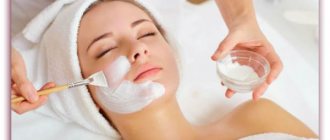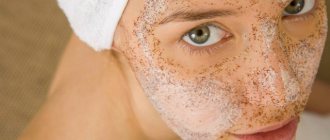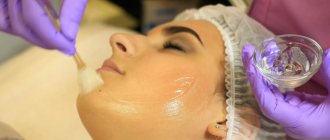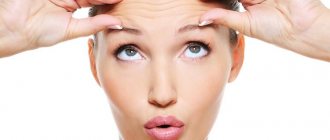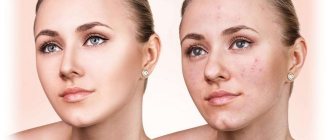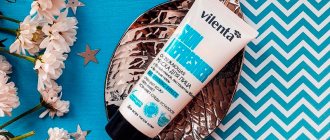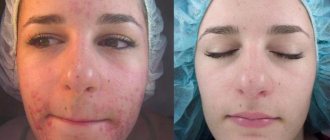Let's kick off the peeling season the right way! According to experts, the course of cleansing procedures should ideally begin from October to March, when the sun's rays are not so scorching, and therefore the risk of complications is lower. Plus, by summer the skin will be completely restored, and you will look perfect. To achieve maximum results without unpleasant consequences, you need to choose the optimal cleansing method from the variety, as well as properly prepare the skin before the intended procedure.
When should peeling season open?
Chemical influences and exfoliation make the skin vulnerable, and the lack of a protective shell requires special care and careful attention. When to perform the exfoliation procedure, each woman decides for herself, but it is important to understand that after the cleansing processes have taken place in the epidermal layer, the best care is considered to be: protecting the face from wind, dry air, frost and the aggressive influence of ultraviolet radiation. The conclusion is simple: it is better to peel during the season of low solar activity.
Women strive to look beautiful all year round. When choosing a period of the year for peelings, the main thing is to take into account not only environmental influences, but also the professionalism of the specialist. A competent cosmetologist can choose a good way to cleanse your face, regardless of seasonal characteristics.
We invite you to watch a video on facial care:
Winter care
Due to the increased sensitivity of the skin after renewal with peeling, ladies avoid contact with the sun, since after 40-45 years there is a tendency to pigmentation. In addition, medium, deep peels can cause thermal burns, and accordingly, the beginning of winter for some is the best time for renewal. While avoiding exposure to sunlight, do not forget about the natural decrease in immunity in winter. Usually during this period, the skin may show signs of colds, rashes, herpes, and allergic reactions to cold. In winter, you should take vitamin complexes and be attentive to your health.
In winter, after the exfoliation procedure, the skin is better amenable to regeneration processes. The effect of drugs in cloudy weather has a longer lasting effect. On the eve of the New Year holidays, it’s a good time to try deep cleansing using hardware methods.
All cleansing procedures carried out in winter make the skin perfect, accumulate reserves of nutrients in the inner layers, and improve metabolic processes. Cleanings carried out during this period bring maximum benefits and the season should be used to the maximum.
Autumn cleansing
The season when trees lose their leaves is a signal for women over 30 to do superficial and medium cleansing. Fruit and multi-fruit compositions well restore the dermis exhausted by the summer sun; it is only important to wait until solar activity decreases.
A professional approach to exfoliation will eliminate signs of photoaging, age spots, uneven complexions, and give the skin a fresh, radiant look. To establish adequate nutrition of the skin and blood circulation, the following acidic compounds are used:
- Glycolic.
- Retinoic.
Exfoliation in spring
Their main task is to return a vigorous, radiant appearance to tired skin after winter. Wasted vitamins and microelements are reflected on the face. Spring cleansing procedures saturate the surface of the face, smooth out relief, and give a healthy shine. Thus, preparation for the ultraviolet action of drying rays occurs.
Low concentration acids are used for exfoliation during this period. Preference should be given to whitening phytin peels, which help normalize the production of melanin by the dermis.
Summer manipulations
The purpose of summer cleansing is obvious. Using the procedure, they improve and even out the tone of the face, eliminate signs of photoaging, or, if necessary, prepare the skin for an even tan. In the summer there should be no deep cleansing, so as not to overly injure the dermis. Medium cleaning is also not advisable. The best solution is superficial exfoliation.
What to choose in the summer:
- Exfoliation with lactic acid.
- Exfoliation with mandelic acid.
- Cleansing with salicylic acid.
- Ferulic peeling.
- Acid-free method (enzymatic purification).
It should not be forgotten that after peeling in the summer it is necessary to use creams and lotions with strong UV protection factors, as well as nourishing and moisturizing agents. Monitoring the maintenance of water balance is important.
Skin care after superficial peeling
There may be some slight redness, swelling, or irritation of the skin immediately after the procedure. These phenomena are temporary and pass without additional treatment. Minor peeling may occur on sensitive skin; it also does not pose a health hazard and goes away within 2-3 days. Severe consequences (pain, burns, itching) indicate that the procedure was performed incorrectly.
To eliminate painful irritation and redness, moisturizers and anti-inflammatory agents are prescribed. To relieve minor discomfort and slight peeling, thermal water should be used.
In the first days after peeling, prolonged exposure to the sun, as well as visiting a sauna, bathhouse or solarium, are not recommended. The skin must be carefully protected from ultraviolet exposure; before going outside, you must apply sunscreen with the maximum SPF factor to your face.
Superficial peeling does not require a rehabilitation period, since the skin recovers very quickly on its own. But there are a number of tips from cosmetologists that it is advisable to follow:
- ensure thorough hydration of the skin;
- do not use fatty creams or essential oils for a week, they can clog pores;
- when peeling, there is no need to rip off the scales; it is better to wait until the skin cleanses itself;
- for 2-3 days do not apply decorative cosmetics to your face, including foundations and concealers;
- cleanse the skin using micellar lotions; tap water and cleansing milk with a rich texture are not suitable;
- maintain a drinking regime (up to 2-2.5 liters of water per day) and adhere to a balanced diet including foods rich in vitamins and minerals in the diet;
- Avoid heavy physical activity and ensure emotional peace.
How to prepare your face for peeling
Having chosen the best time for peeling and exfoliation, you need to pay attention to the preparatory activities. Preparation gives better results, as it contributes to:
- Leveling and loosening the stratum corneum of the epidermis.
- Reducing the manifestations of side deviations.
- Activation of the barrier functions of the skin.
During the upcoming physical peeling procedure, perform the following algorithm of actions:
- 7 days in advance they refuse to visit steam rooms and swimming pools.
- For 14 days, stop sunbathing and visiting solariums.
- During the entire preparatory period, sun cream is used.
- Inflamed areas of skin should be treated.
- If you have herpes, take a course of therapy with antiviral drugs.
- For a week, you should give up scrubbing, gommages, and cosmetic care products containing acids.
- If the purpose of peeling is to whiten the face, start using whitening products 7 days in advance.
The list of recommendations for preparing for acid peeling is slightly different, since two weeks before the procedure it is worth including creams and lotions with acids (concentration 8-25%). Glycolates and retinoids promote softening and improved regeneration of the integument.
Sometimes before the procedure, the cosmetologist considers it advisable to prescribe an antibiotic, which prevents the development of a possible infection.
14 days before acid peeling, stop taking hormonal medications, and you should also undergo an allergy test.
What are the benefits and what could be the harm?
The benefits of peeling are quite obvious: this procedure helps to get rid of the rough layer of skin, while eliminating the effects of acne, small wrinkles, scars, scars and age spots, as well as the problem of blackheads. Peeling cannot remove all age-related changes in the skin, but it helps fight the first signs of aging, and also smoothes the skin, smoothes out facial wrinkles, evens out tone, moisturizes and rejuvenates.
However, with such an impressive set of positive aspects, the peeling procedure also has its drawbacks. Firstly, the procedure causes some types of adverse reactions, such as redness of the skin, the formation of bleeding wounds, and swelling of the face. The recovery period lasts several days, during which it is not recommended to use cosmetics, and the skin requires additional and more careful care.
Recommendations from cosmetologists
Cosmetologists recommend opening the peeling season during the off-season, thus the risks of side effects are significantly reduced. The skin responds faster and better to regeneration processes, and the results last for a longer period of time.
Facial care is an important procedure in a woman’s life. It is worth taking seriously the choice of a salon, cosmetologist, and peeling products. You should also prepare for the recovery process and select high-quality creams to nourish and protect delicate and vulnerable skin.
Contraindications, precautions
Ready-made peeling masses for self-use are classified as superficial.
They can be used at any time of the year; the course and break between procedures are specified by the manufacturer in the instructions.
These are 1-2 procedures per week, a course of 10-15 sessions.
Professional peels for use in beauty salons should be used under the supervision of a cosmetologist; independent use can cause burns of varying degrees or premature aging of the skin.
It is better not to experiment with these drugs, otherwise the consequences can be very disastrous.
Contraindications:
- the presence of foci of inflammation in the treated area (wounds, pustules, rashes, pimples, acne);
- mechanical damage to the epidermis (abrasions, open wounds, cracks);
- exacerbation of herpes;
- skin diseases;
- acute infectious diseases;
- period of pregnancy and lactation;
- tendency to allergic reactions.
The skin constantly needs cleansing; this is the only way it can maintain its elasticity, freshness and attractiveness.
You should take care of your face throughout all seasons, but you need to do it wisely, carefully selecting procedures, taking into account seasonal characteristics.
With this approach, the skin will look great throughout the year, delighting its owner with long-lasting youth and unfading beauty.


